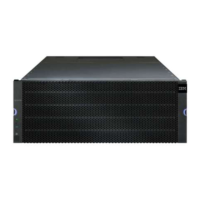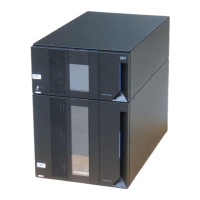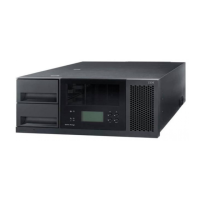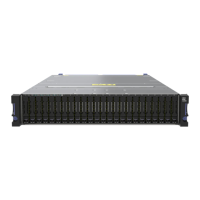Parameter Description
owner The controller that owns the logical drive. Valid
controller identifiers are a or b, where a is the controller
in slot A, and b is the controller in slot B. Use this
parameter only if you want to change the logical drive
owner.
preReadRedundancyCheck The setting to turn on or turn off pre-read redundancy
checking. Turning on pre-read redundancy checking
verifies the consistency of RAID redundancy data for the
stripes containing the read data. Pre-read redundancy
checking is performed on read operations only. To turn
on pre-read redundancy checking, set this parameter to
TRUE. To turn off pre-read redundancy checking, set this
parameter to FALSE.
Note: Do not use this parameter on non-redundant
logical drives, such as RAID 0 logical drives.
readCacheEnabled The setting to turn on or turn off the read cache. To turn
on the read cache, set this parameter to TRUE. To turn off
the read cache, set this parameter to FALSE.
redundancyCheckEnabled The setting to turn on or turn off the write cache. To turn
on the write cache, set this parameter to TRUE. To turn off
the write cache, set this parameter to FALSE.
segmentSize The amount of data (in KB) that the controller writes on
a single drive in a logical drive before writing data on
the next drive. Valid values are 8, 16, 32, 64, 128,256,
or 512
userLabel The new name that you want to give an existing logical
drive. Enclose the new logical drive name in double
quotation marks (" ").
writeCacheEnabled The setting to turn on write cache capability.
Notes
When you use this command, you can specify one or more of the optional parameters.
You can apply these parameters to only one logical drive at a time:
v addCapacity
v segmentSize
v userLabel
Add Capacity, Add Drives, and Segment Size
Setting the addCapacity parameter, the addDrives parameter, or the segmentSize parameter starts a
long-running operation that you cannot stop. These long-running operations are performed in the
background and do not prevent you from running other commands. To show the progress of
long-running operations, use the show logicaldrive actionProgress command.
The addDrives parameter supports both high-capacity drive expansion enclosures and low-capacity drive
expansion enclosures. A high-capacity drive expansion enclosure has drawers that hold the drives. The
drawers slide out of the drive expansion enclosure to provide access to the drives. A low-capacity drive
expansion enclosure does not have drawers. For a high-capacity drive expansion enclosure, you must
specify the identifier (ID) of the drive expansion enclosure, the ID of the drawer, and the ID of the slot in
which a drive resides. For a low-capacity drive expansion enclosure, you need only specify the ID of the
drive expansion enclosure and the ID of the slot in which a drive resides. For a low-capacity drive
Chapter 3. Script Commands 3-229

